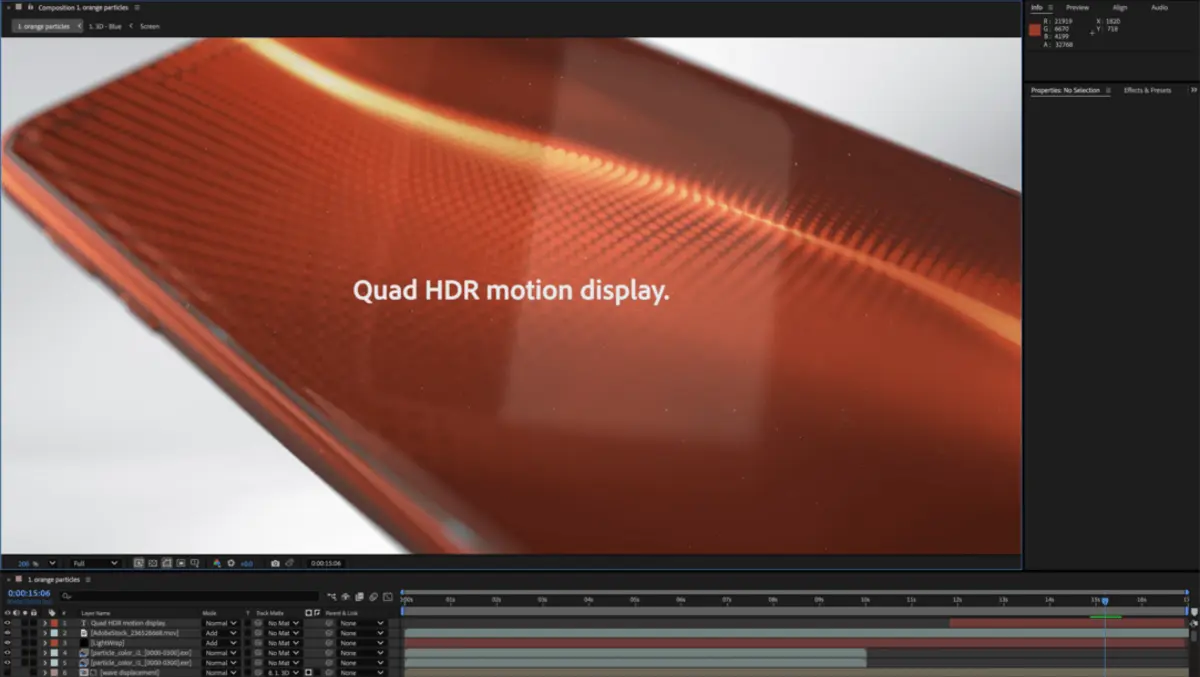
Adobe reveals major Adobe After Effects 3D enhancements
Adobe has announced a significant update to its Adobe After Effects software, introducing substantial improvements and new features aimed at enhancing the 3D workspace within the application at the IBC event.
The upgrade is targeted at motion designers and video editors, facilitating the seamless animation and blending of 3D objects with real-world footage and 2D elements directly within Adobe After Effects. This update seeks to streamline workflows that previously required integration with third-party applications, making 3D elements more approachable and integrated.
Adobe's response to motion designers' enthusiasm and feature requests has been positive. "The response from the motion design community has been full of excitement, followed by a number of meaningful feature requests. We’ve heard the community loud and clear, and these updates are a direct response to the enthusiasm and passion of After Effects users," indicated a statement from Adobe.
Key new features have been introduced, including support for embedded 3D animations. This feature allows After Effects to support embedded 3D animations from imported 3D models, making it easier for artists to animate characters and objects created through external animation software. With this support, motion designers can import 3D models with skeletal rigs, keyframe animations, and bone-based deformations, all natively supported and smoothly retimed within After Effects.
The update also brings ultra-realistic shadows and colour shadows, enhancing the realism of 3D objects within compositions. This new feature includes shadow catchers, which enable 3D objects to interact realistically with video footage by accurately capturing shadows cast by virtual objects onto the environment. Furthermore, colour shadows add a layer of realism, acknowledging that shadows in real-world environments are not purely black or grey.
Depth mapping for 3D models is another significant addition, essential for compositing 3D elements into live-action footage. Utilizing depth maps extracted from Advanced 3D scenes, this feature encodes distance information for each pixel, facilitating post-processing effects like depth-of-field blur or fog.
New animation presets have been added, offering designers over 30 new animation presets alongside number counting presets for infographics. This allows designers to reduce the time spent on keyframing diverse animations, dedicating more effort to creative motion design.
The Properties panel has been updated to accelerate workflows by integrating frequently used controls into a single contextual panel. Designers can now adjust and control their cameras and lights within this panel to fine-tune their motion designs.
The overall performance of Adobe After Effects has been improved, particularly with hardware-accelerated UI/UX performance on Windows platforms, reportedly delivering up to four times faster performance. The application also features a refreshed, modern design aimed at reducing the time users spend re-learning tools across different Adobe applications.
Additional enhancements include improved integration with Adobe Substance 3D. Features such as "Send to After Effects" from Substance 3D Painter and seamless material creation from Substance 3D Sampler strengthen the connection between After Effects and Substance 3D. This integration is expected to enhance the visual output and consistency of 3D projects within After Effects.
These updates are aimed at making 3D content creation within After Effects more efficient and visually compelling. Adobe's commitment to responding to user feedback and continuously improving its tools is clear in these updates, which are now available in the beta version of After Effects.


